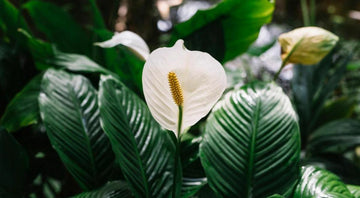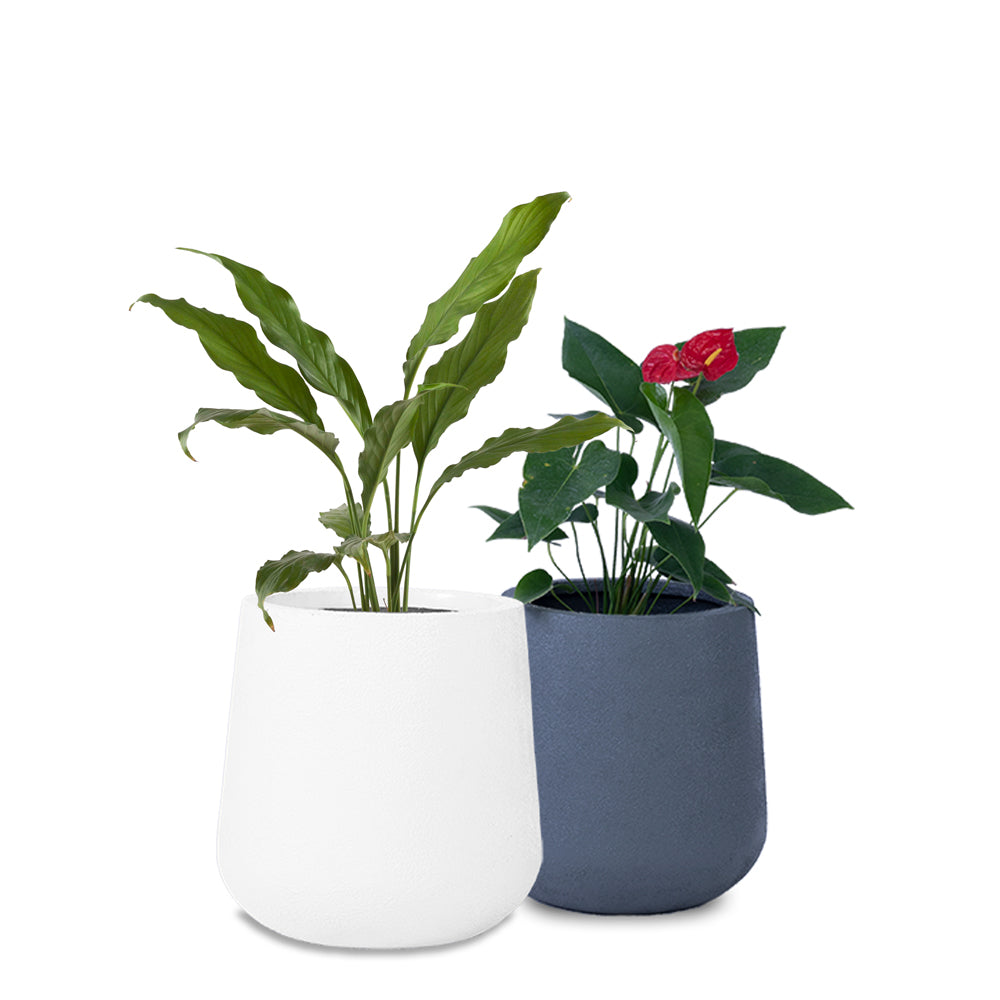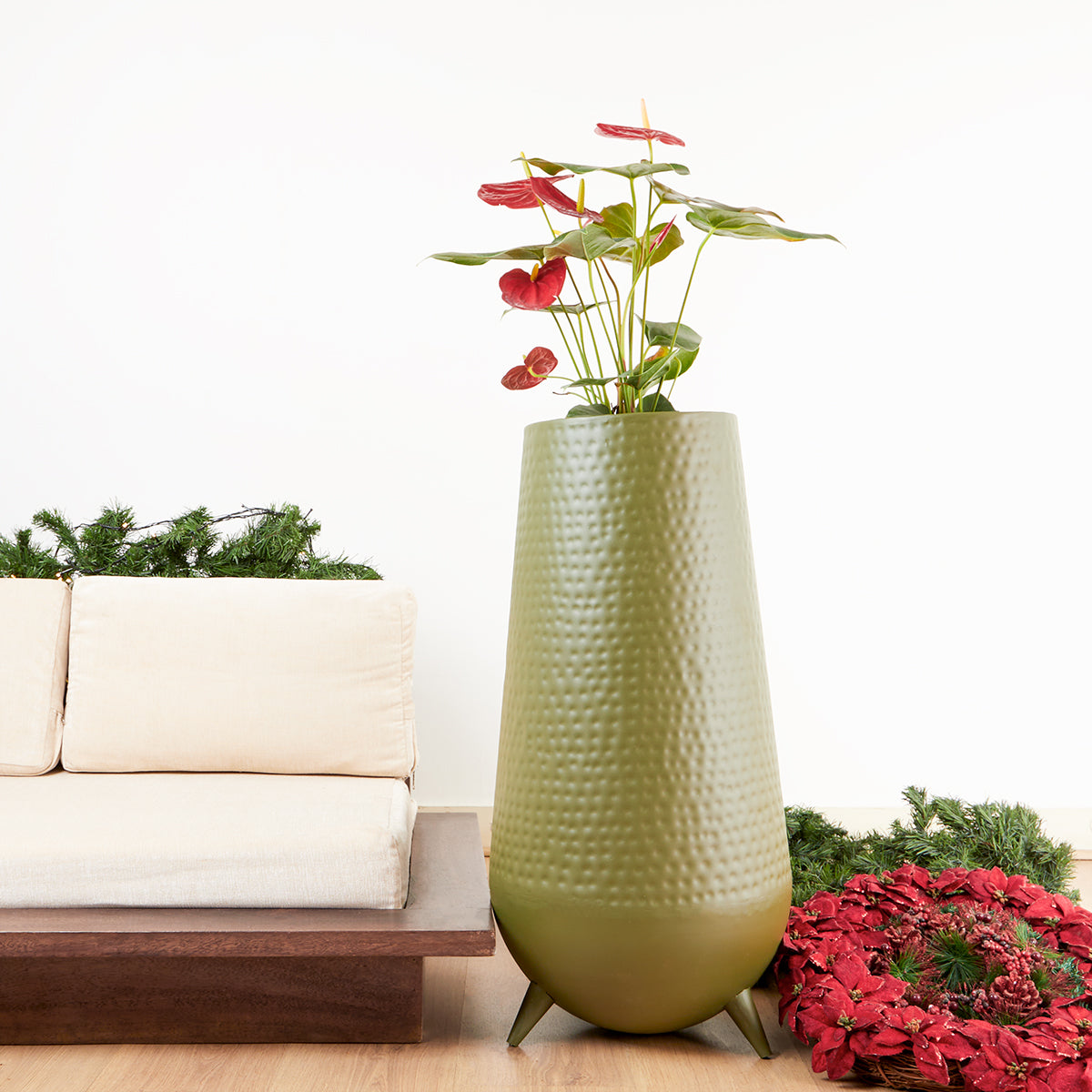Peace Lilies are tropical plants that produce beautiful white flowers and lush foliage. Not only are they visually appealing, but they're also great at filtering out harmful toxins from the air, making them a great addition to any home or office space. Plus, they're easy to care for and can thrive in low-light conditions, making them perfect for those who may not have a lot of natural light in their home. So, if you're looking for a plant that can bring a sense of peace and tranquility to your space, then a Peace Lily might just be the plant for you!
Choosing a Peace Lily
Planting Peace Lilies | Caring for Peace Lilies | Propagating Peace Lilies | Tips for Successful Propagation | Tips for Successful Propagation | Flowering Peace Lilies | Planter Recommendation
There are a variety of options for you to choose from. Some of the most popular varieties include the classic Spathiphyllum wallisii, the larger Spathiphyllum sensation, and the variegated Spathiphyllum domino.
When choosing your preferred Peace Lily, consider the size of the plant, the lighting requirements you can provide, and the amount of space you have available.
It is also important to purchase a healthy plant. Look for a plant with healthy, green foliage and no signs of yellowing or brown spots. Check the soil to make sure it's not waterlogged and avoid plants with wilted or drooping leaves.
(back to top)
Planting Peace Lilies

Now that you have chosen your Peace Lily, let's look into their planting requirements:
While planting your Peace Lilies, make sure to use a well-draining potting mix and select a planter with good drainage holes. When potting your Peace Lily, ensure that the soil is moist but not too wet. Water your plant thoroughly and allow excess water to drain away before placing it in its new planter. Peace Lilies prefer to be slightly root-bound, so don't be tempted to use a planter that's too big. It's also a good idea to repot every year or two to refresh the soil and prevent overcrowding.
Peace Lilies prefer bright, indirect light, but they can also tolerate low-light conditions. Be sure to avoid placing your plant in direct sunlight, as this can scorch the leaves. As for temperature, they thrive in warm, humid environments.
(back to top)
Caring for Peace Lilies

To make sure your Peace Lily stays healthy and happy, here's what you need to know about caring for your plant:
Watering and Frequency: Peace Lilies prefer to be kept consistently moist, but not waterlogged. Water your plant thoroughly, then allow the soil to dry out slightly before watering again. As a general rule, always touch the soil before watering your plant. Make sure the top soil is moist to dry but not waterlogged when you water it. An interesting feature of peace lilies is that they have a visual cue to indicate when they need watering: their leaves will begin to droop. So if you notice that your plant looks less perky than usual, it's worth checking the soil moisture by touching it with your finger. If the soil feels dry, it's time to give the plant some water.
Fertilizing: Peace Lilies benefit from regular fertilization, especially during the growing season (early summer). Use a balanced, water-soluble fertilizer once a month, following the package instructions for dilution and application.
Pests and Diseases: These are generally hardy plants, but they can be susceptible to a few common pests and diseases. Spider mites, mealybugs, and scale insects can all be problematic, as can fungal diseases like root rot and leaf spot.
Prevention and Treatment: To prevent pests and diseases, make sure to keep your Peace Lily in a clean and well-ventilated space. Avoid overwatering, as this can create conditions that are favorable to fungal growth. If you do notice signs of pests or disease, take action right away. Remove affected leaves or stems and treat with a natural insecticide like neem oil spray or fungicide as needed.
(back to top)
Propagating Peace Lilies

Peace Lilies can be propagated through division. Division involves separating the root ball of an established plant into smaller sections, each with its own leaves and roots.
This method is a perfect way to propagate plants that have multiple stems or grow separate bunches of foliage out of the ground. Peace lilies grow the majority of their foliage directly from the soil, allowing for easy division. Unlike plants with a single stalk or trunk, peace lilies can be divided several times, making them an excellent option for propagating multiple plants at once. Whether you're looking to expand your peace lily collection or share some plants with friends, dividing your peace lilies is a great way to go.
(back to top)
Tips for Successful Propagation
First, choose a healthy, mature peace lily plant that has multiple stems or has grown too large for its current pot. Then, gently remove the plant from its pot, taking care not to damage the roots or leaves.
Once you have the plant out of the pot, examine the root system and look for natural divisions. If the roots have become very crowded, you can carefully separate the root ball into two or more sections using a clean knife or pruning shears. Be sure to have each new section with at least one stem and several leaves, as well as a healthy amount of roots.
If using a knife, simply slice through the root ball between the sections you want to separate. If using pruning shears, make a clean cut through the root ball. After dividing the plant, you may notice some leaves droop, but the plant should be able to recover in a few days.
Once you have your divided sections, plant each one in a separate pot with fresh, well-draining soil. Be sure to water each plant thoroughly and keep them in a bright, indirect light. It may take a few weeks or even a few months for new growth to appear, but with patience and care, your peace lily will be thriving in no time.
(back to top)
Flowering Peace Lilies

If you notice that your plant isn't producing any flowers, the most common cause is a lack of sufficient light. Although Peace Lilies can tolerate low-light conditions, they still need some light to bloom. To encourage flowering, try moving the plant to a brighter location where it can receive bright, indirect light for several hours each day.
Another reason why your plant might not be blooming could be due to improper fertilization. Over-fertilizing can result in green flowers, while weak-looking flowers or a lack of blooms can indicate a deficiency of phosphorous. To address these issues, adjust your fertilization routine accordingly. If you notice green flowers, reduce the amount of nitrogen-rich fertilizer. If the plant is not blooming well, consider switching to a fertilizer formulated for flowering plants, which will contain more phosphorous.
With their lush green leaves and striking white blooms, Peace Lilies add a touch of elegance and serenity to any space. By following the tips and guidelines we've shared, you can keep your plant healthy and thriving for years to come. They're readily available at most garden centers and online retailers, and they make a wonderful addition to any plant collection. So go ahead and bring some peace and tranquility into your home with a lovely Peace Lily – you won't be disappointed!
(back to top)
Planters recommended for Peace Lily
Discover more planters in our collection











 At Palasa, we believe in the seamless fusion of nature, design and humanity.
At Palasa, we believe in the seamless fusion of nature, design and humanity.